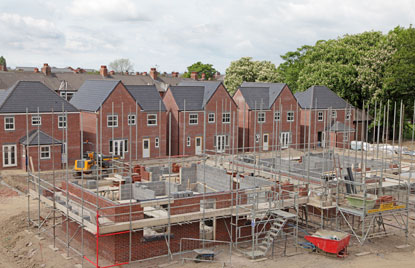By Richard Johnstone | 13 June 2014
Councils will have to put in place pre-approved planning permissions on brownfield sites deemed suitable for housing in a bid to remove obstacles to development, Chancellor George Osborne has said.

In the Mansion House speech last night, Osborne said the government must be ‘vigilant’ against risks that house prices were growing too fast and would take action to boost supply.
‘Across the country, the ratio of house prices to incomes is high by historical standards,’ Osborne said.
‘And while average loan-to-value ratios for new lending are still well below normal, average loan-to-income ratios have risen to new highs.
‘Let me spell it out: does the housing market pose an immediate threat to financial stability today? No, it doesn’t. Could it in the future? Yes, it could, especially if we don’t learn the lessons of the past.’
As well as announcing new powers for the Bank of England to cap the size of mortgage loans as a share of a borrower’s income or the value of the house, which would also applied to Help to Buy loans, Osborne announced a new duty in a bid to boost supply.
Town halls will be required to put in place pre-approved planning permissions on brownfield sites that are suitable for housing. These Local Development Orders should be in place for 90% of suitable brownfield land by 2020, Osborne said, allowing developers to get building sooner.
As the pre-arranged planning deals will reduce the amount of section 106 contributions agreed between councils and developers as part of planning permission, the government said it would create a £5m fund to help local authorities create the first 100 sites with LDOs. This could grow to nearly £500m, Osborne said.
The government would also consult on a range of measures to enforce this approach, including allowing developers to apply directly to central government where councils have not done enough to remove planning obstacles on brownfield sites.
Such an approach was needed to ensure enough homes were built across the country while also limiting development on greenfield land, the chancellor said.
‘This urban planning revolution will mean that in effect development on these sites will be pre-approved – local authorities will be able to specify the type of housing, not whether there is housing. And it will mean planning permission for up to 200,000 new homes – while at the same time protecting our green spaces.’
Further details of the new regime in London have been set out with Mayor of London Boris Johnson to build 50,000 new homes, across 20 new housing zones in the capital. In total, the Treasury and the Greater London Authority will provide £400m to help prepare brownfield land for development, and councils will be tasked with identifying and packaging together brownfield land into housing zones.
Five sites have already been indentified, including Tottenham Hale in Haringey, Southall in Ealing and South Poplar in Tower Hamlets.
Osborne also said the additional powers for the Bank of England to take action in the mortgage market would ensure robust oversight.
The Bank should not hesitate to use these new powers if they think it necessary to protect financial stability, Osborne insisted.
‘If the Bank of England thinks some borrowers are being offered excessive amounts of debt, they can limit the proportion of high loan to income mortgages each bank can lend, or even ban all new lending above a specific loan to income ratio.
‘And if they really think a dangerous housing bubble is developing, they will be able to impose similar caps on loan to value ratios – as they do in places like Hong Kong.’




















